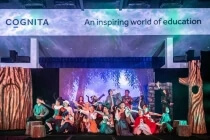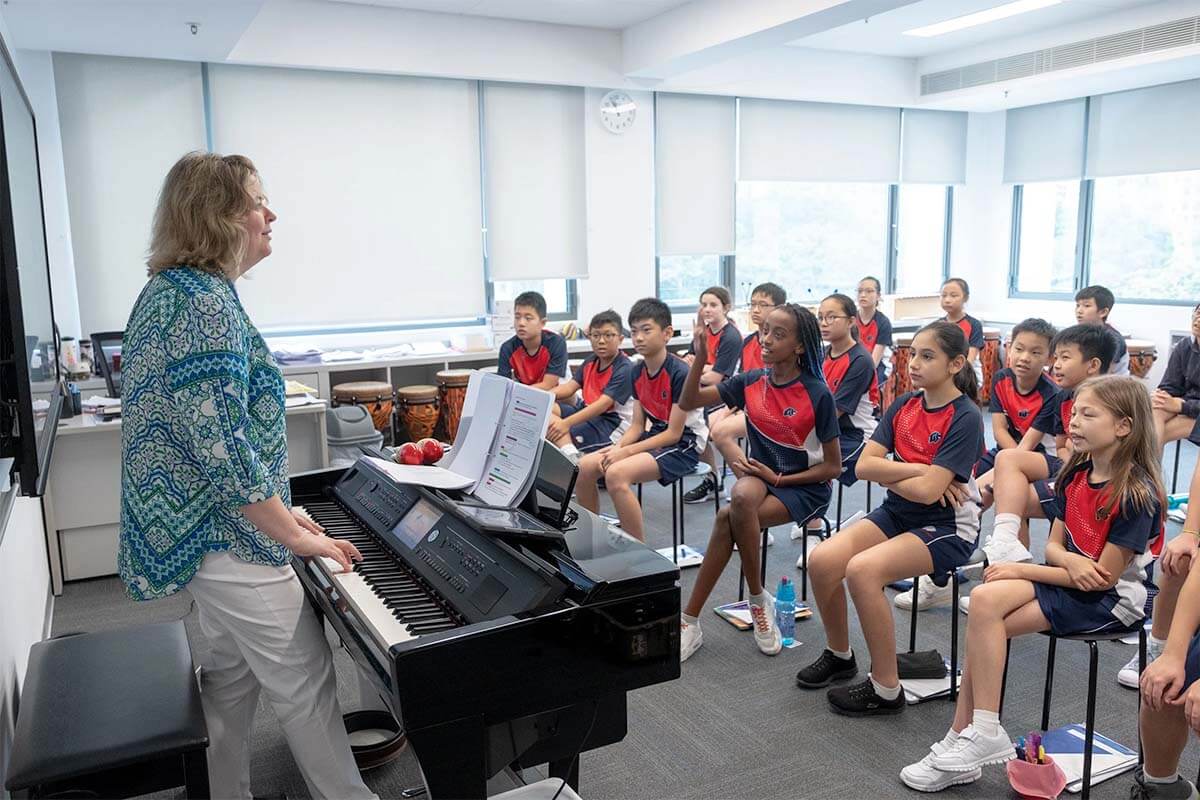Learn from Expert Faculty About the Stamford Arts Program
Gone are the days when rote learning was the norm. Nowadays schools create meaningful learning experiences connected to subject areas, with the goal to challenge students into developing transdisciplinary skills and empowering them to find their own voice. The arts hold one key to unlocking a truly holistic education.
Our Head of Arts, Ms. Tina Batchelder-Schwab shares insights on how the arts education has grown and adapted in the past decades, and how Stamford’s arts program is designed to support the growth of our community.
Q: How did your international teaching experience shape your philosophy as an Arts educator?
I began my career in the public school system in New York, and upon completing my Masters Degree in Music Education, we decided to move our family to my husband’s hometown of Fribourg, Switzerland. I started working at the International School of Berne with 48 nationalities in our student body and 11 teachers in our faculty. It was truly an international experience! I spent six years teaching music to the entire school and this is where my own children began their education. This was also the beginning of my 20 years of IB teaching experience.
My international teaching experience has shown me that when designing the instructional approach of an arts program, we should consider factors such as the student population, the culture of the community in which a school exists, and the broader culture in which that community exists. What is the level of formal arts education our students have experienced? How well do our students master the language of instruction? What is the value of the arts within society? These are all challenging factors for an arts program.
Q: What makes the Stamford’s Arts program unique?
When our school began in 2017, we were aware that many of our students did not have a formal arts education prior to attending our school, this could be an exciting and sometimes daunting environment for some of them. Finding a voice and making mistakes were real challenges that we faced together. English language learning was also a priority for many students, and the arts played a role in this.
Our faculty and staff provided support, encouragement as role models for our students, performing beside them in productions and on stage and attending their art shows and ensemble concerts to cheer them on. Progress and increased confidence came quickly and constantly throughout the first two and a half years!
We are also very fortunate to have arts teachers who are gifted artists in their personal lives and serve as role models for our students. I have been an opera singer for thirty years and graduated with a dual degree in Musical Education and Opera performance. I find singing very therapeutic and for me, it works similarly to how meditation or running might work for someone else. I also really love to perform in musicals including “The Sound of Music”, “Sweeney Todd”, “Footloose” and “The Drowsy Chaperone”. As one of my students recently said about rap music, if someone took away opera and I could never sing it or hear it again, it would feel like I lost a part of myself.

Q: As the Head of Arts, what’s your aspiration for the arts program at Stamford?
We are excited to continue to develop Stamford’s arts program on the solid foundation that we have developed. Not only will the IB Diploma Program afford our higher level artists and musicians many possibilities, we also look forward to our increasingly sophisticated instrumental ensemble program, exhibition and performance opportunities in the local community and partnership with guest artists through presentation and mentoring.
“Teaching is challenging and it requires a plethora of resilience, patience and adaptability. Nikos Kazantzakis said, ‘True teachers are those who use themselves as bridges over which they invite their students to cross; then, having facilitated their crossing, joyfully collapse, encouraging them to create their own.’ Yes, in the inquiring world of learning we lead, encourage, inspire, provide and then get out of the way and watch the magic happen.” – Ms. Tina Batchelder-Schwab






